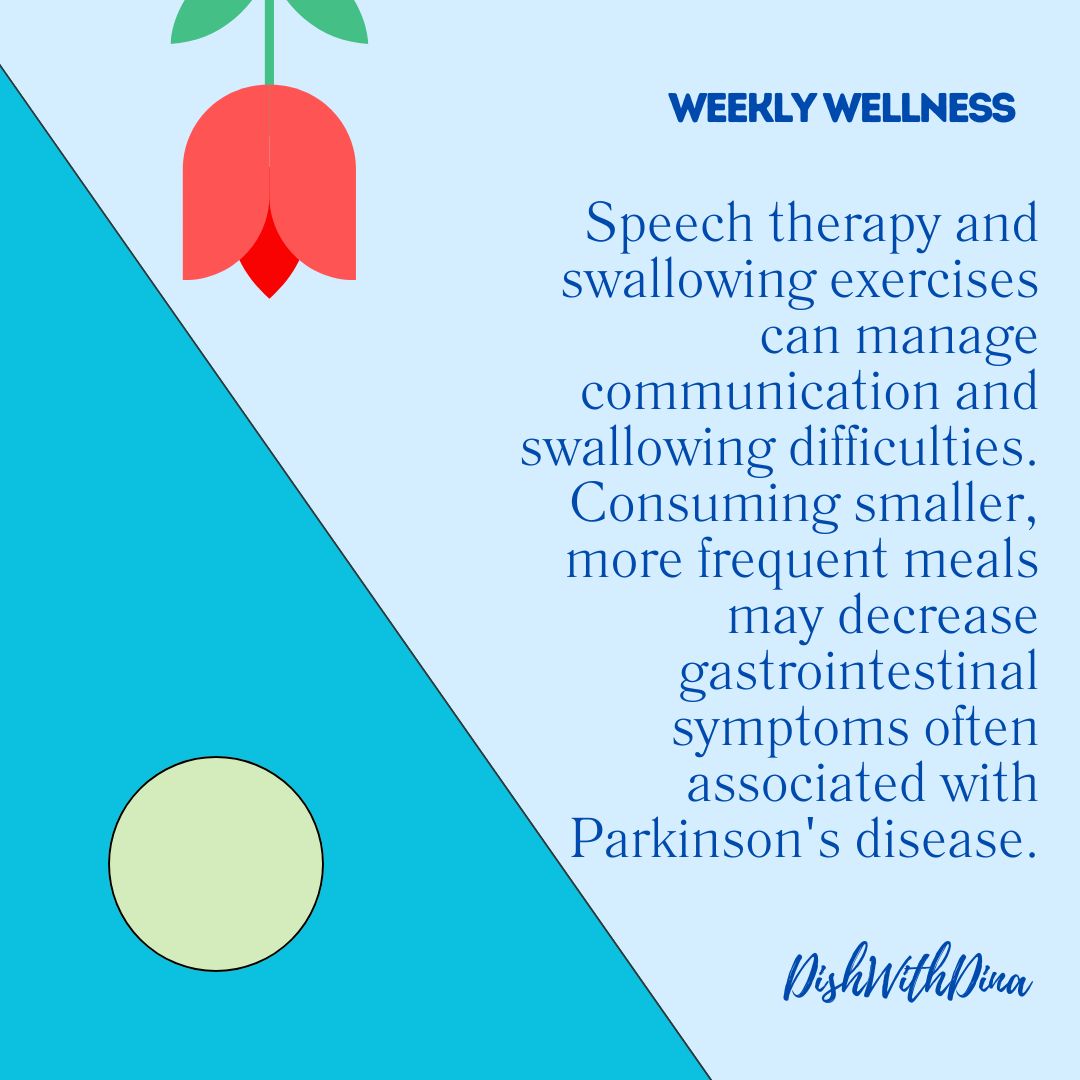Explore brain-supportive foods, treatments, and trusted resources to help manage Parkinson’s Disease.
Our brains are incredibly complex and vital to every aspect of our being—controlling movement, memory, emotions, and even digestion. Brain health refers to the preservation of optimal brain integrity and cognitive function throughout life. Unfortunately, neurodegenerative disorders threaten that integrity.
This month, we not only shine a light on Parkinson’s Disease (PD) but also explore what it means to nurture a healthy brain. Brain health is lifelong, and the choices we make today—through food, movement, sleep, and social connection—can support cognitive function, protect memory, and reduce risk of neurodegenerative conditions. Whether you’re caring for someone with Parkinson’s or looking to maintain your own cognitive well-being, small, consistent habits add up over time.
While there is no cure yet, supportive care, early intervention, and lifestyle changes—particularly related to nutrition and wellness—can make a meaningful difference.
Introduction to Parkinson’s Disease
Parkinson’s Disease (PD) is a progressive neurodegenerative disorder that affects movement, mood, and cognitive function over time, due to a decrease in dopamine-producing cells in the brain. With nearly one million Americans currently living with PD, the impact of this disease reaches far beyond the individual, affecting families, friends, and communities [1]. Symptoms range from tremors to stiffness, progressively worsening over time.
Screening for Parkinson’s disease typically involves neurological exams and assessments of movement and symptom progression. Early detection of Parkinson’s disease allows for earlier intervention and symptom management. Speech therapy and swallowing exercises can manage communication and swallowing difficulties.
Symptoms of PD include:
- Tremors (shaking hands or limbs)
- Muscle stiffness or rigidity
- Slow movement (bradykinesia)
- Balance and coordination problems
- Depression or anxiety
- Constipation or digestive issues
PD is typically diagnosed in people over 60 but can occur earlier. It is a progressive disease, meaning symptoms worsen over time, although the rate of progression varies.

Managing Parkinson’s Disease: Treatment, Nutrition, and Lifestyle
There’s currently no cure for PD, but a combination of medication, therapy, nutrition, and movement can greatly improve quality of life.
Common treatments include medications like Levodopa and Carbidopa to replenish dopamine or mimic its effects. Deep brain stimulation (DBS) may be a surgical option for those with advanced PD. Physical, occupational, and speech therapy can support mobility, function, and communication.
While there’s no one-size-fits-all diet for PD, nutrition plays a crucial role in managing Parkinson’s disease symptoms and overall well-being, especially to support energy levels and optimize medication effectiveness. From meal prep to managing swallowing issues, small efforts make a big impact [2]. Because Levodopa competes with protein for absorption, it may help to take medication 30–60 minutes before eating protein-rich meals. Antioxidant-rich foods—think berries, leafy greens, and colorful vegetables—and omega-3 fatty acids (like those found in fatty fish, flaxseeds, and walnuts) may help reduce inflammation and fight oxidative stress [3]. Constipation is a common issue with PD as is dehydration, so fluids and fiber are crucial. Sip fluids throughout the day and include water-rich foods like fruits and soups. Consuming smaller, more frequent meals may also assist in decreasing other gastrointestinal symptoms. Low levels of vitamin D and B12 are associated with worsening motor symptoms, so be sure to get your fill of outdoor sunshine, if possible, and quality animal ingredients, or choose foods fortified with these micronutrients. Individuals with PD should work with a dietitian and speech therapist to modify food textures and fluid consistency if needed [4].
Lifestyle supports include regular exercise, like walking, swimming, yoga, or even boxing programs tailored to PD patients. Mindfulness and stress reduction are so important in a challenging disease like PD. Meditation and breathing exercises can not only calm the nervous system and reduce anxiety, but also may improve sleep [5].
Brain-Supportive Foods and Recipes
You don’t need fancy ingredients to eat for brain health. Check out the three simple, budget-friendly recipes below that incorporate key nutrients for Parkinson’s support.
Brain-Boosting Berry Oatmeal – Rich in antioxidants and fiber
Ingredients:
- ½ cup rolled oats
- 1 cup water or unsweetened almond milk
- ½ cup blueberries or mixed berries (frozen or fresh)
- 1 tbsp ground flaxseeds
- Dash of cinnamon
Instructions:
Cook oats with water/milk. Stir in berries and flaxseeds. Top with cinnamon and enjoy.
Anti-Inflammatory Tuna Salad – Full of omega-3s and easy to prep
Ingredients:
- 1 can of tuna in olive oil or water, drained
- 1 tbsp olive oil or plain Greek yogurt
- ½ avocado, diced
- 1 celery stalk, chopped
- Squeeze of lemon juice
- Salt and pepper to taste
Instructions:
Mix all ingredients and serve over greens, in a whole grain wrap, or with whole-grain crackers.
Rainbow Veggie Stir-Fry – Antioxidant-packed, versatile, and affordable
Ingredients:
- 1 tbsp olive or avocado oil
- 1 cup broccoli florets
- ½ red bell pepper, sliced
- 1 carrot, sliced
- ½ zucchini, sliced
- 2 tbsp low-sodium soy sauce or coconut aminos
- 1 clove garlic, minced
- Optional: tofu or scrambled egg for protein
Instructions:
Sauté veggies in oil until tender. Add garlic and soy sauce, stir well. Serve over brown rice or quinoa.
The Role of Caregivers in Parkinson’s Disease
Family caregivers are the backbone of support for many people living with PD. Their role goes beyond physical care—they manage medications, attend appointments, assist with daily routines, and offer emotional support. Utilize resources from organizations like the Parkinson’s Foundation and the Michael J. Fox Foundation for valuable support and guidance. Online communities and educational workshops can also provide avenues for caregivers to share experiences and gain essential skills.
Burnout is real. Respite care, support groups, and counseling can make a difference. While caregivers should educate themselves about Parkinson’s disease symptoms, treatments, and caregiving strategies to provide the best possible support, they should also prioritize their own well-being and consider delegating household chores and shopping duties to friends and family from time to time. Remember, you can’t pour from an empty cup. Sleep, nourishment, and social connections are just as important for caregivers.

Living with Parkinson’s Disease can be challenging, but a supportive community, nourishing foods, and small daily actions can make a real impact. Whether you’re managing PD yourself or caring for someone who is, you are not alone—and there are tools, treatments, and resources to help you thrive. Regular medical check-ups and communication with healthcare providers are essential for monitoring Parkinson’s disease progression and adjusting treatment plans.
Stay curious and proactive. Sign up for educational webinars, read caregiver guides, or explore communities like Together for Sharon that provide uplifting resources and firsthand stories. Developing a daily routine and setting realistic goals can help manage Parkinson’s disease symptoms and improve overall quality of life.
For personalized support with nutrition or brain health, consider reaching out to a registered dietitian specifically trained in neurological conditions or one who works in partnership with a neurologist’s or speech therapist’s office.
Learn more: Dr. George Ackerman (Sharon’s son) is a passionate advocate dedicated to finding a cure for Parkinson’s disease. Delve into this insightful discussion with George on the latest research advancements, advocacy efforts, and personal stories driving momentum toward a cure.
References
- National Institute of Neurological Disorders and Stroke. (2023). Parkinson’s Disease: Challenges, Progress, and Promise | National Institute of Neurological Disorders and Stroke. Www.ninds.nih.gov. https://www.ninds.nih.gov/current-research/focus-disorders/parkinsons-disease-research/parkinsons-disease-challenges-progress-and-promise
- Knight, E., Geetha, T., Burnett, D., & Babu, J. R. (2022). The Role of Diet and Dietary Patterns in Parkinson’s Disease. Nutrients, 14(21), 4472. https://doi.org/10.3390/nu14214472
- Zhang, X., Molsberry, S. A., Yeh, T.-S., Cassidy, A., Schwarzschild, M. A., Ascherio, A., & Gao, X. (2022). Intake of Flavonoids and Flavonoid-Rich Foods, and Mortality Risk Among Individuals With Parkinson Disease: A Prospective Cohort Study. Neurology, 10.1212/WNL.0000000000013275. https://doi.org/10.1212/wnl.0000000000013275
- The Soft Way to Fuel for Parkinson’s Disease. (2022). ParkinsonsDisease.net. https://parkinsonsdisease.net/living/soft-consistency-diet
- Bollu, P. C., & Sahota, P. (2017). Sleep and Parkinson’s Disease. Missouri Medicine, 114(5), 381–386. https://www.ncbi.nlm.nih.gov/pmc/articles/PMC6140184



0 Comments